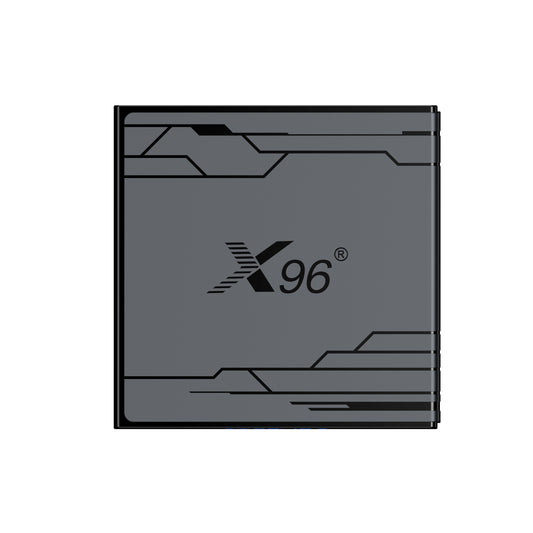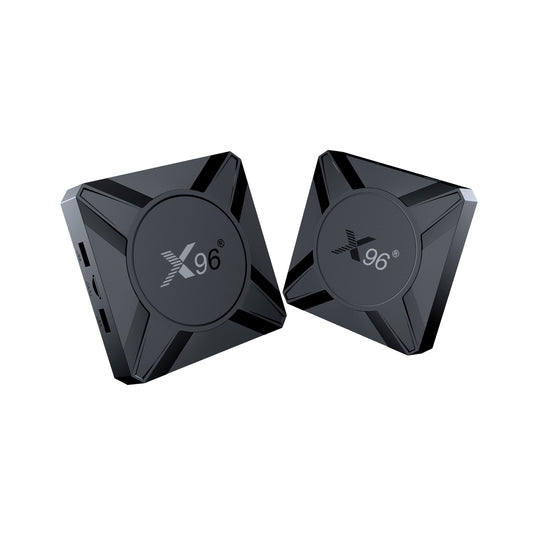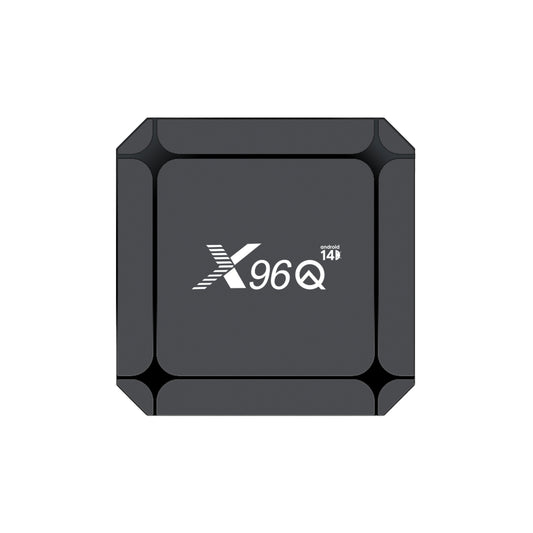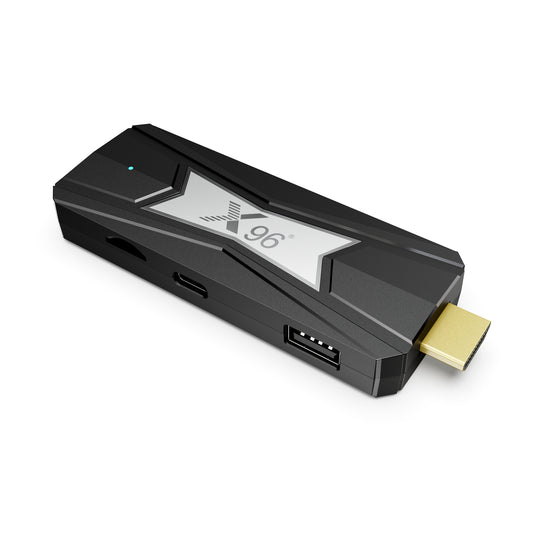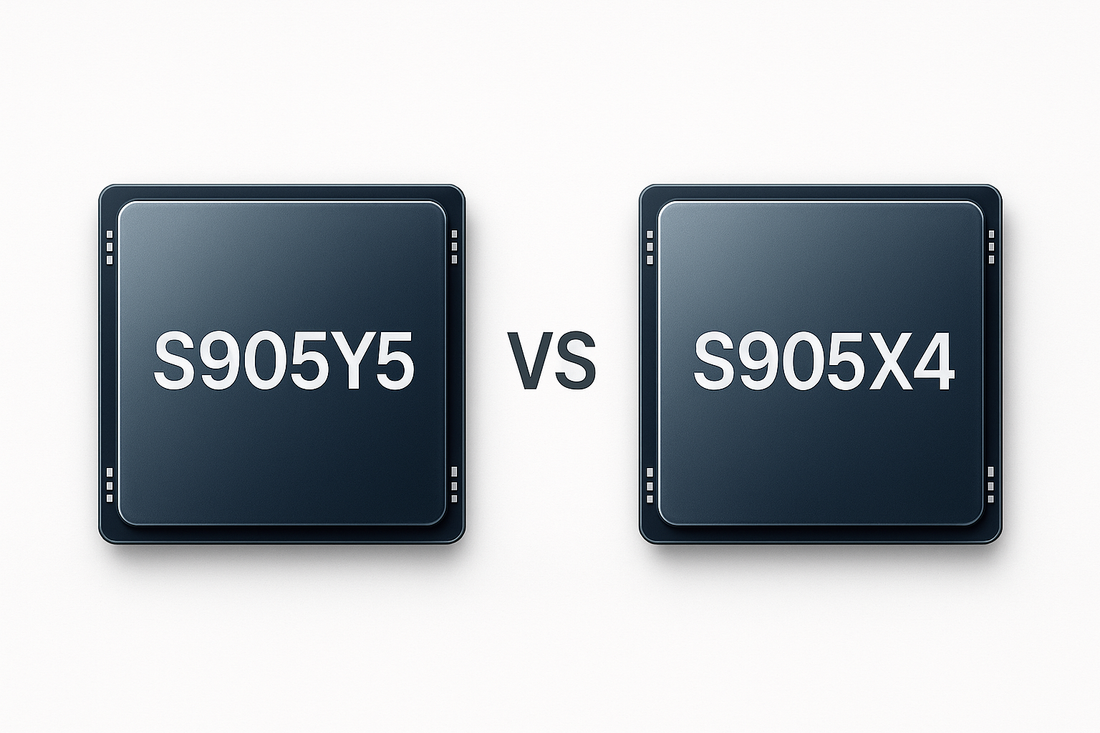
Amlogic S905Y5 VS S905X4:A Comparative Summary
Amlogic S905Y5 VS S905X4: When selecting a modern media chipset for your next streaming device, this comparison is central to making an informed choice. Both powerful quad-core solutions from Amlogic offer advanced 4K decoding, yet they diverge in key areas of process technology, feature integration, and target application, presenting a clear trade-off between cutting-edge efficiency and expanded connectivity. Understanding these differences is crucial for identifying the ideal SoC that balances performance, features, and cost for your specific product needs.
1. Amlogic S905Y5 Chipset

The Amlogic S905Y5 chipset features a quad-core ARM Cortex-A55 CPU paired with an ARM Mali-G31 MP2 GPU, delivering efficient performance for media playback. It supports modern video codecs including AV1, VP9, and H.265, enabling smooth 4K@60fps video decoding. With advanced connectivity options like integrated Wi-Fi 6 and Bluetooth 5.2 support, it provides a complete solution for high-performance streaming devices.
2. Amlogic S905X4 Chipset

The Amlogic S905X4 is a system-on-chip (SoC) designed for media playback, featuring a quad-core ARM Cortex-A55 CPU and an ARM Mali-G31 MP2 GPU . It is manufactured using a 12nm process and supports modern video codecs including AV1, VP9, and H.265, enabling 4K video decoding at 60fps . The chip also integrates advanced features such as support for Vulkan 1.1 graphics API and a dedicated audio DSP for high-fidelity audio processing.
3. Amlogic S905Y5 VS S905X4
| CPU | Chipset | Amlogic S905X4 | S905Y5 | ||||
| Architecture | Quad Core ARM Cortex A55 | Quad Core ARM Cortex A55 | |||||
| GPU | Chipset | ARM Mali-G31 MP2 | ARM G31 MP2 | ||||
| Architecture | OpenGL ES 1.1/2.0/3.2,OpenCL 2.0,Vulkan 1.1 support | OpenGL ES 1.1, 2.0, 3.2, Vulkan 1.2 and OpenCL 2.0 support | |||||
| RAM | Capacity | 4GB (2/4GB Optional) | Option:2/4GB | ||||
| ROM | Capacity | 64GB (16/32/64/128GB Optional) | Option:16/32GB | ||||
| External storage | USB Storage Devices | USB2.0, USB3.0 Support | 2*USB2.0 Type-A, 1*USB2.0 Type-A | ||||
| Micro SD card | Supported | Supported | |||||
| Software | |||||||
| Operating system | OS Version | Android 11 | Android 14 | ||||
| Language | Multi-Language | Multi-Language | |||||
| Multimedia | Video | Amlogic Video Engine (AVE) with dedicated hardware decoders and encoders | |||||
| Support multi-video decoder up to 4x1080P@60fps | |||||||
| Supports multiple “secured” video decoding sessions and simultaneous decoding and encoding | AV1 MP-10@L5.1 up to 4Kx2K@60fps | ||||||
| Video/Picture Decoding | VP9 Profile-2 up to 4Kx2K@60fps | ||||||
| VP9 Profile-2 up to 8Kx4K@24 fps | H.265 HEVC MP-10@L5.1 up to 4Kx2K@60fps | ||||||
| H.265 HEVC MP-10@L5.1 up to 8Kx4K@24 fps | H.264 AVC HP@L5.1 up to 4Kx2K@30fps | ||||||
| AVS2-P2 Profile up to 8Kx4K@24 fps | MPEG-4 ASP@L5 up to 1080P@60fps (ISO-14496) | ||||||
| MPEG-4 ASP@L5 up to 1080P@60fps (ISO-14496) | WMV/VC-1 SP/MP/AP up to 1080P@60fps | ||||||
| WMV/VC-1 SP/MP/AP up to 1080P@60fps | MPEG-2 MP/HL up to 1080P@60fps (ISO-13818) | ||||||
| AVS-P16(AVS+) /AVS-P2 JiZhun Profile up to 1080P@60fps | MPEG-1 MP/HL up to 1080P@60fps (ISO-11172) | ||||||
| MPEG-2 MP/HL up to 1080P@60fps (ISO-13818) | Multiple language and multiple format sub-title video support | ||||||
| MPEG-1 MP/HL up to 1080P@60fps (ISO-11172 | MJPEG and JPEG unlimited pixel resolution decoding (ISO/IEC-10918) | ||||||
| RealVideo 8/9/10 up to 1080P@60fps | |||||||
| Multiple language and multiple format sub-title video support | |||||||
| MJPEG and JPEG unlimited pixel resolution decoding (ISO/IEC-10918 | |||||||
| Supports JPEG thumbnail, scaling, rotation and transition effects | |||||||
| Supports *.mkv,*.wmv,*.mpg, *.mpeg, *.dat, *.avi, *.mov, *.iso, *.mp4, *.rm and *.jpg file formats | Supports HDR10+, HDR10, HLG HDR processing | ||||||
| Audio | Supports MP3, AAC, WMA, FLAC, Ogg. | Supports MP3, AAC, WMA, FLAC, Ogg. | |||||
| Image | HD JPEG、BMP、GIF、PNG、TIF | HD JPEG、BMP、GIF、PNG、TIF | |||||
| Network service | |||||||
| Wi-Fi | Type | Support WiFi IEEE 802.11 b / g / n / ac | Support IEEE 802.11 b / g / n /ac /ax(WIFI 6) | ||||
| Frequency | Support 2.4G and 5G | Support 2.4G and 5G | |||||
| Antenna Type | Two external antennas | ||||||
| Bluetooth | Bluetooth | Support BT4.X | Support BT5.X | ||||
| Interface | |||||||
| Charge | DC connector | DC IN(5V/2A) | 5V/2A | ||||
| Video output | HDMI | 4K*2K UHD Output, HDMI 1.4/2.0 | 4K@60 Hz | ||||
| IR Reciver | 3.5mm Earphone jack | Remote Reciver Connect | Remote Reciver Connect | ||||
| Ethernet | Ethernet | 1000M Ethernet | 100Mbps | ||||
Based on the provided specifications, here is a summary of the key differences: the Amlogic S905Y5 VS S905X4
1. Performance & Process
-
S905X4:It supports a wider range of storage options, up to 128GB ROM, and features a Gigabit Ethernet port (1000Mbps) and USB 3.0 support.
-
S905Y5: It generally offers better power efficiency and thermal performance. It is limited to 32GB ROM, Fast Ethernet (100Mbps), and only USB 2.0 ports.
2. Multimedia & Video Playback
-
S905X4: Offers superior video decoding capabilities, supporting 8K@24fps decoding for VP9, H.265, and AVS2 formats. It uses the older HDMI 2.0 standard.
-
S905Y5: Maxes out at 4K@60fps for all formats, including AV1 and VP9. However, it supports a more modern Vulkan 1.2 graphics API (vs. Vulkan 1.1 on X4) and lists support for HDR10+.
3. Connectivity & System
-
S905X4: Features older wireless technology with Wi-Fi 5 (802.11ac) and Bluetooth 4.X. It typically runs on the older Android 11 OS.
-
S905Y5: Integrates modern connectivity with Wi-Fi 6 (802.11ax) and Bluetooth 5.X, providing faster and more stable wireless connections. It runs the latest Android 14 out of the box.
4. Amlogic S905Y5 vs. S905X4: A Comparative Summary
Based on a detailed comparison of the provided specifications, the Amlogic S905X4 and S905Y5 present a clear strategic divergence, positioning each chipset for a distinct segment of the market. The S905X4 establishes itself as a multimedia and connectivity powerhouse. It boasts superior video decoding capabilities, supporting up to 8K@24fps for formats like VP9, H.265, and AVS2, which surpasses the S905Y5's 4K@60fps ceiling. This raw power is complemented by robust I/O options, including a Gigabit Ethernet (1000Mbps) port and support for USB 3.0, facilitating high-speed data transfer and local network streaming. Its support for larger storage configurations (up to 128GB ROM) further solidifies its position for power users.
In contrast, the S905Y5 is engineered as a modern and integrated solution focused on efficiency and contemporary wireless standards. While its video decoding is capped at 4K@60fps (albeit with full AV1 support), it gains a significant edge in several key areas. It benefits from a more advanced process technology, integrates Wi-Fi 6 and Bluetooth 5.x for faster and more stable wireless connections, and, crucially, ships with the latest Android 14 operating system, ensuring longer software support and modern features out of the box. Its support for Vulkan 1.2 also indicates more modern graphics handling compared to the S905X4's Vulkan 1.1.
The Amlogic S905Y5 VS S905X4 comparison reveals two capable media chipsets with distinct strategic focuses. The S905X4 positions itself as a multimedia powerhouse, boasting superior video decoding that supports up to 8K resolution for specific codecs and enhanced connectivity with Gigabit Ethernet and USB 3.0. In contrast, the S905Y5 emerges as a model of modern integration and efficiency. It counters with a more advanced manufacturing process, support for the latest wireless standards including Wi-Fi 6, and typically runs on a significantly newer Android 14 OS. Therefore, the Amlogic S905X4 vs. S905Y5 choice ultimately hinges on user priority: the X4 is ideal for maximum playback performance and wired connectivity, while the Y5 offers a more future-proof, wirelessly-focused, and power-efficient user experience.

